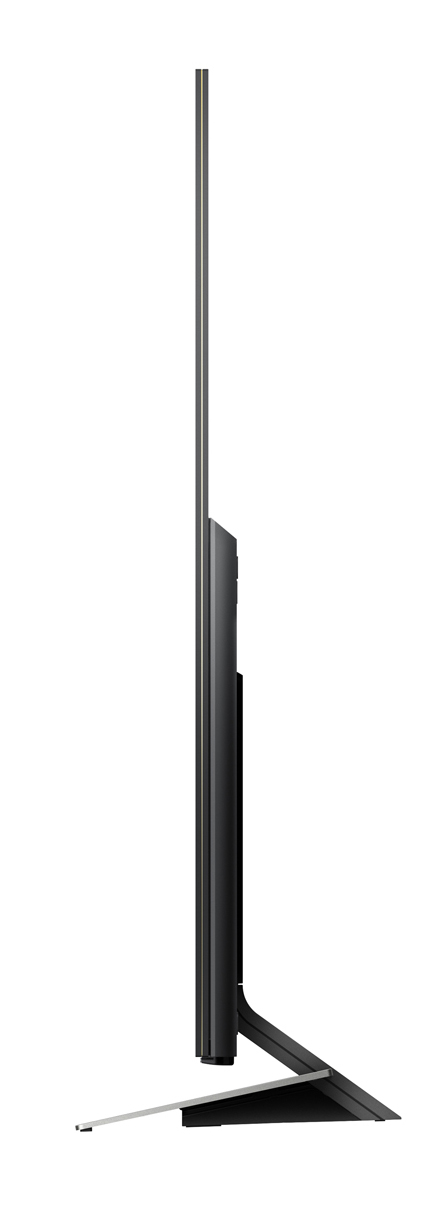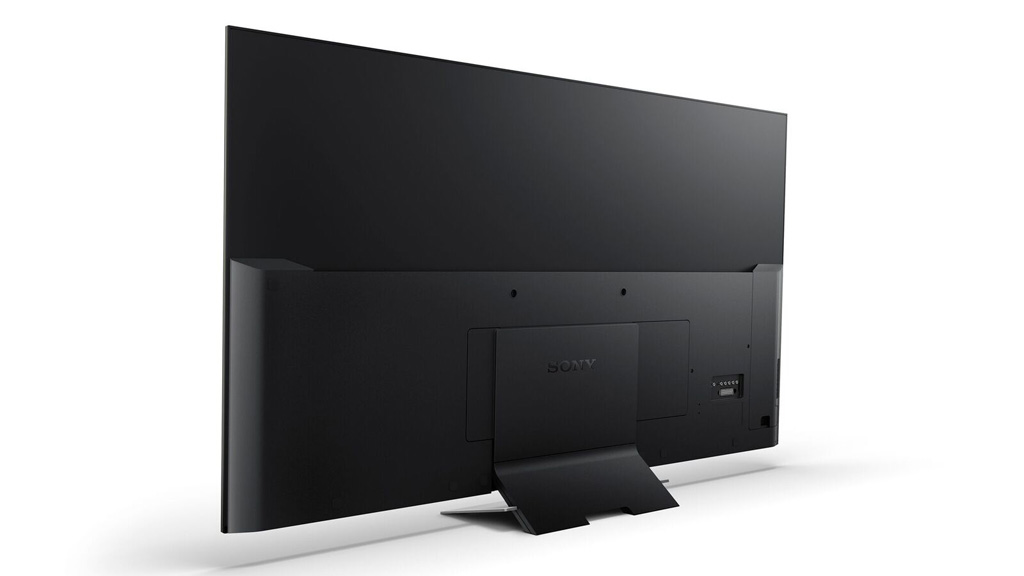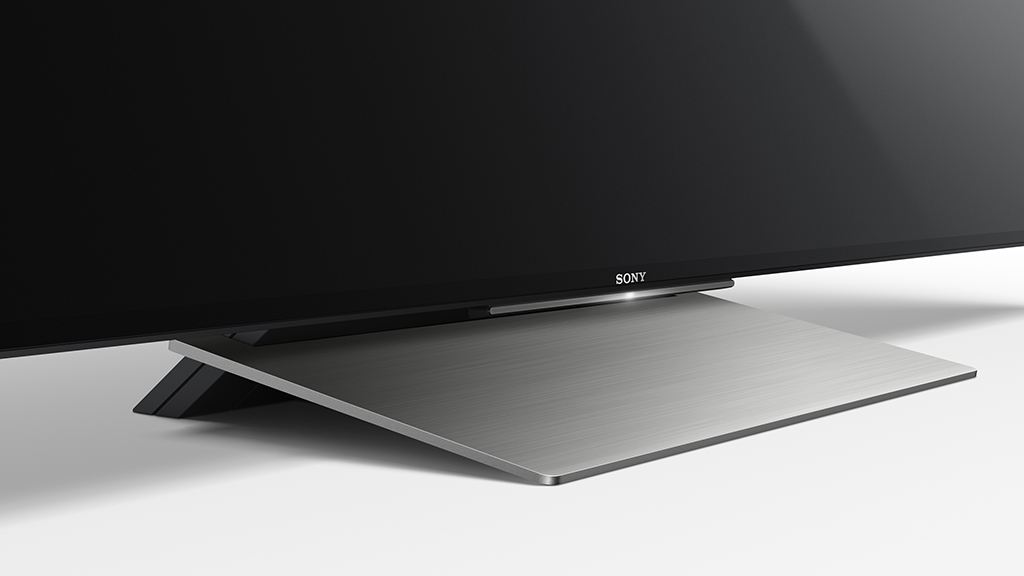TechRadar Verdict
With the X9300D, Sony has provided an affordable and high quality way to get on the 4K HDR bandwagon that is capable of stunning colours and outstanding brightness, thanks to some ingenious engineering.
Pros
- +
Superb colours and brightness
- +
Ultra thin design
- +
Android TV functionality
- +
Powerful processor
Cons
- -
Odd remote buttons
- -
Motion Flow ghosting
- -
Average built-in audio
Why you can trust TechRadar
As the war for your 4K TV allegiance rages on, TV manufacturers have turned their sights away from providing more pixels, to providing better ones. Often touted as the next evolution in television technology, High Dynamic Range (HDR) boasts improved brightness and colour, promising vibrant, high-quality images that come close to bridging the gap between TV and what the human eye sees in real life.
When it comes to delivering show-stopping HDR images, backlighting is key – usually, a Full-Array backlight is needed to achieve the level of brightness necessary for HDR content. As impressive as Full-Array backlighting is, it will often add to the thickness (and cost) of a TV set.
Sony has sidestepped these issues by opting for a new Slim Full-Array Direct LED backlighting system – this is an improved edge-mounted LED backlighting system that uses two layers of light. When used together, the two edge lights are able to specifically target areas of the screen with precision while minimising light in the areas surrounded them. This allows the Sony's new flagship to maintain its impressive brightness and black levels, delivering a true HDR experience while keeping screen depth to a minimum and the price of the unit down.
Though we're focusing our attention on the 55-inch X9300D, we also spent time with The 65-inch model. The KD55X9300D is already available and has a launch price of $3,999, while the KD65X9300D is also on sale now, selling for $5,999.
Features

When we mentioned earlier that this TV was thin, we weren't kidding. At just 35mm at its thickest point, it's obvious that this television is designed to be mounted on your wall (especially when you consider that it comes with a simple hang-on-the-wall bracket inside the box). Combined with its extremely thin bezel, the X9300D has an unobtrusive design that allows it to seamlessly slip into any living room and instantly feel like it's always been there. And, if you're not interested in wall-mounting, you can sit the set on a refreshingly practical central pedestal, eschewing the (rather annoying) modern trend of separated feet at either end of the screen.
This is one truly fine-looking flatscreen. To signify its high-end credentials, there's a gold vein running through the edge of the frame. This apes the gold design affectation seen on Sony's High Res Audio speakers.
Connections include four HDMIs, component/composite AV inputs, plus three USBs including one fast 3.0 port. There's also Ethernet and an optical digital audio output.
Sign up for breaking news, reviews, opinion, top tech deals, and more.
All the HDMI inputs are HDCP 2.2-enabled, which means you can use them with external 4K sources, like an Nvidia Shield or, eventually, a 4K Blu-ray player. It should be noted though that Sony's HDMI inputs need to be manually assigned to support HDR by switching on the Enhanced HDMI setting for the input you're using in the TV's menus.
Onboard is a dual-band Wi-Fi antenna that runs on both the 2.4Ghz and 5.0Ghz frequencies. There's also Wi-Fi Direct and, it being an Android TV, built-in Google Cast functionality.
On the back side, Sony has introduced a neat cable management system to keep things tidy. Cables run from the HDMI board, through plastic gullies, until they flow from the back of the pedestal. This works fine as long as you don't use overly chunky cabling. Once everything connected, simply place an included plastic cover over the whole section.

If you're not planning to wall mount, you'll be happy to know that the X9300D has also got a fairly solid (and rather industrial) stand, which we recommend building first on a nearby table. Once all the necessary screws are in place, you (and a friend) can then carefully slot the television on to the base for its final screws. Unlike many of the 4K televisions on the market, the X9300D's stand is situated right in the middle of the set, so you won't need an extra wade cabinet to sit it on.

Usability
The remote control supplied with the X9300D is at once an improvement and a step backwards from the one that came with last year's models. This time around, Sony has chosen to combine the voice functionality that came as a secondary remote with the 2015 range, with the primary remote. Simply press the microphone button and start talking. While the voice functionality works as well as you would expect given Google's search pedigree, the controller itself doesn't feel as nice to use. Sony has jettisoned traditional buttons in favour of rubberised bumps and ridges. The result is a little awkward and quite clicky. It's not a deal-breaker, but we wish Sony had kept regular buttons for its remote.
The smart OS is, of course, Android-based. It's home to a large range of apps, including Netflix and Ultraflix, as well as other favourites, like YouTube, Crackle, Presto, AnimeLab, SBS On Demand and many more.
If you're already comfortable with Android as a platform due to familiarity with it running on smartphones and tablets, this TV's home screen will feel like second nature to you. That said, if you aren't, you may find the amount of content thrown your way a little overwhelming – there are just so many apps and things to navigate at the touch of your remote's home button. You can download Android games to your television and play them using any Bluetooth game controller, however, this being a Sony TV, a Dual Shock 4 controller is certainly encouraged.
The main Home page is stacked with shelves, from tutorials to a plethora of featured apps, then inputs and then more apps. The Settings menu sits at the bottom of the home screen stack.

Stephen primarily covers phones and entertainment for TechRadar's Australian team, and has written professionally across the categories of tech, film, television and gaming in both print and online for over a decade. He's obsessed with smartphones, televisions, consoles and gaming PCs, and has a deep-seated desire to consume all forms of media at the highest quality possible.
He's also likely to talk a person’s ear off at the mere mention of Android, cats, retro sneaker releases, travelling and physical media, such as vinyl and boutique Blu-ray releases. Right now, he's most excited about QD-OLED technology, The Batman and Hellblade 2: Senua's Saga.
